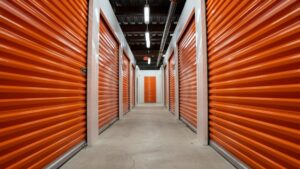Climate change issues impact every industry, including commercial real estate. As an increasing focus is placed on the reduction of greenhouse gas emissions, the commercial mortgage sector needs to take notice of the fact that change is happening.
Buildings — both during construction and everyday use — have been identified as major sources of greenhouse gases. Mortgage brokers should be aware of loan programs, including those offered by the government-sponsored enterprises Fannie Mae and Freddie Mac, that are designed to help landlords pay for retrofits to existing multifamily properties. In turn, greenhouse gas emissions will be reduced as investors, tenants and governmental bodies advocate for greener buildings.
The vast majority of scientists agree that climate change is real. They also agree that it’s progressing at an alarming speed and that the primary source is the human-caused greenhouse effect (warming that occurs when the atmosphere traps heat radiating from Earth to space). Greenhouse gas emissions originating from human activity have increased since the pre-industrial era and are now higher than ever.
What may be surprising to many is the significant role that real estate plays in the production of greenhouse gases.
These emissions have led to atmospheric concentrations of carbon dioxide, methane and nitrous oxide that are unprecedented in at least the past 800,000 years. The warming of the earth is believed to have led to numerous catastrophic events and effects, including the increased frequency and intensity of hurricanes, tsunamis, droughts and fires, as well as ocean acidification and a significant decline in non-human species.
Real estate’s role
The scientific community has identified the primary cause of human-induced greenhouse gas emissions as the burning of fossil fuels, specifically for electricity, heat and transportation. What may be surprising to many is the significant role that real estate plays in the production of greenhouse gases.
Growing movement
Sustainability in real estate is not a novel concept. A movement to increase the environmental friendliness of commercial and residential properties has been growing for decades. During this time frame, methods and materials to create real estate assets that use less energy and emit less greenhouse gases have become increasingly accessible and affordable for use in new construction and retrofits alike.
Today, with climate change becoming a household concern, property owners across the country are more easily able to reduce the environmental impacts of their buildings. Mortgage brokers can help their existing clients — and possibly create more business — by helping them navigate through the various financing options to accomplish these tasks. In the multifamily housing sector, some property owners (with the prodding of governmental bodies, such as the state of New York) are initiating retrofits to reduce the environmental impacts of their buildings, lower their long-term energy bills and increase their marketability among renters who are concerned about their own environmental footprints.
Current data points to an increasing number of renters who seek sustainable housing. Notably, Generation Z and millennials are some of the most ardent supporters of sustainability. About 80% of all apartment residents, in fact,
believe that living in a green multifamily community is good for their health, according to a 2021 report from ApartmentData.com. Additionally, 61% of the renters surveyed said that they were willing to pay more each month to live in an eco-friendly apartment.
Of course, there is always a cost to improvements, whether they are focused on sustainability or not. The good news for multifamily owners and the mortgage brokers who serve them is that loans for apartment upgrades are currently available at lower-than-market rates through Freddie Mac and Fannie Mae. Each agency offers a package of incentives specifically designed for owners engaged in sustainability-focused renovations, or those whose properties meet specific sustainability requirements, metrics or certifications.
Advantageous financing
The Freddie Mac Multifamily Green Advantage program provides incentives to owners who make efforts to reduce the consumption of energy and water within workforce-housing communities. Under this program, borrowers are offered two paths to finance: Green Up and Green Up Plus. When borrowers reduce energy and water usage by 30% or more, they are likely to qualify for better loan pricing as well as increased funding to enable sustainability enhancements.
To qualify for Freddie Mac’s Green Advantage loan options, borrowers must complete a property analysis that demonstrates how improvements will enable energy and water savings. The agency will reimburse up to $4,000 for the cost of the assessment. Additionally, borrowers must engage with a third-party data-collection company prior to the loan origination. In addition to the financing incentives that owners receive, tenants save an average of $129 per year on their utility bills, based on reported property data.
As of third-quarter 2021, the agency reported that improvements had been made to more than 2,300 properties through the Green Advantage program since its inception in 2016. Freddie Mac data indicates that Green Up multifamily loans totaled more than $64 billion and impacted nearly 630,000 apartment units in the U.S. during this time.
Financed properties are typically garden-style apartments with an average age of 36 years. Nearly nine in 10 of these units are classified as being affordable to households that earn 100% or less of the area median income. The reported annual cost savings for a property owner averages $48,900 per loan and $191 per unit.
Fannie Mae also offers green loan products for multifamily owners who invest in energy and water efficiencies for their properties. Fannie Mae’s programs specifically target affordable apartment assets. The benefits of these programs include preferential loan pricing, additional loan proceeds to cover the cost of energy and water retrofits, and a free energy and water audit report.
Under Fannie Mae’s offerings, borrowers whose properties already possess a green-building certification may qualify for a lower interest rate. Eligible green certifications come from organizations such as BREEAM USA, Build It Green, Enterprise Community Partners, Green Building Initiative, Home Innovation Research Labs, International Living Future Institute and Passive House Institute.
Additionally, the U.S. Department of Energy, U.S. Environmental Protection Agency and U.S. Green Building Council offer green certifications. Lastly, borrowers who invest in active design or resident services that Fannie Mae deems to be key components of its Healthy Housing Rewards program also may qualify for a lower rate.
● ● ●
Mortgage brokers who are looking to advise clients on Freddie Mac and Fannie Mae green loan programs may want to provide them with common examples of the types of sustainable property improvements that can qualify. Freddie reports that showerheads, along with kitchen and bath aerators, have been the top water-device selections due to their low costs and dual energy- and water-savings potential.
Freddie also notes that its top four energy-improvement projects include exterior and common-area LED lighting, interior LED lighting, thermostats and insulation. Alternatively, Fannie Mae provides borrowers with green-rewards guidance, and its High Performance Building Report offers suggestions for energy- and water-efficiency measures that are tailored to meet the needs of the property in question. ●
-
Ed Hussey is the head of agency lending for Sabal Capital Partners LLC, a wholly owned subsidiary of Regions Bank, where he oversees production across the nationwide lender’s Freddie Mac and Fannie Mae loan programs for multifamily properties. Additionally, Sabal offers debt financing through its CMBS loan program to serve core commercial real estate assets nationwide. Visit sabal.com.
View all posts



















































